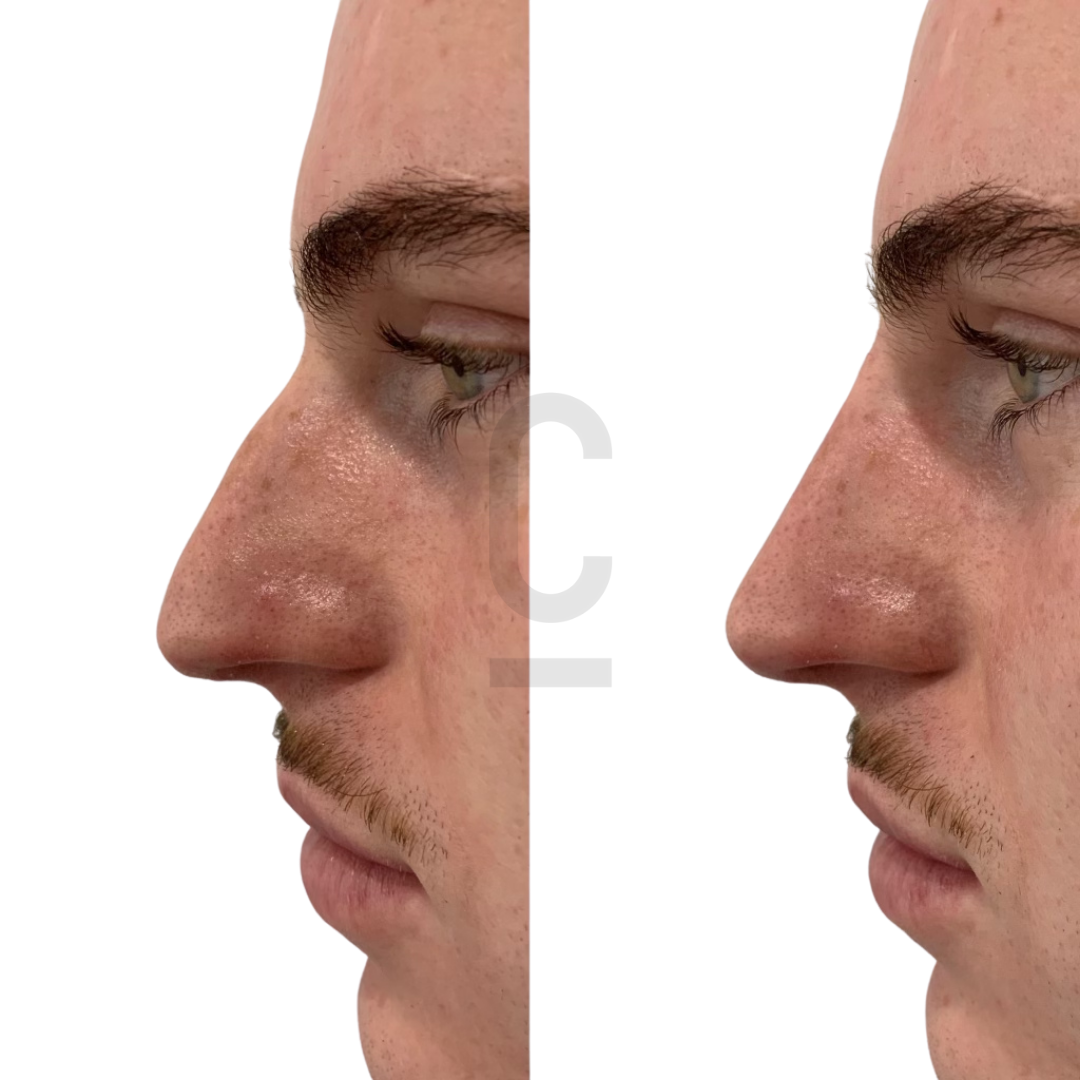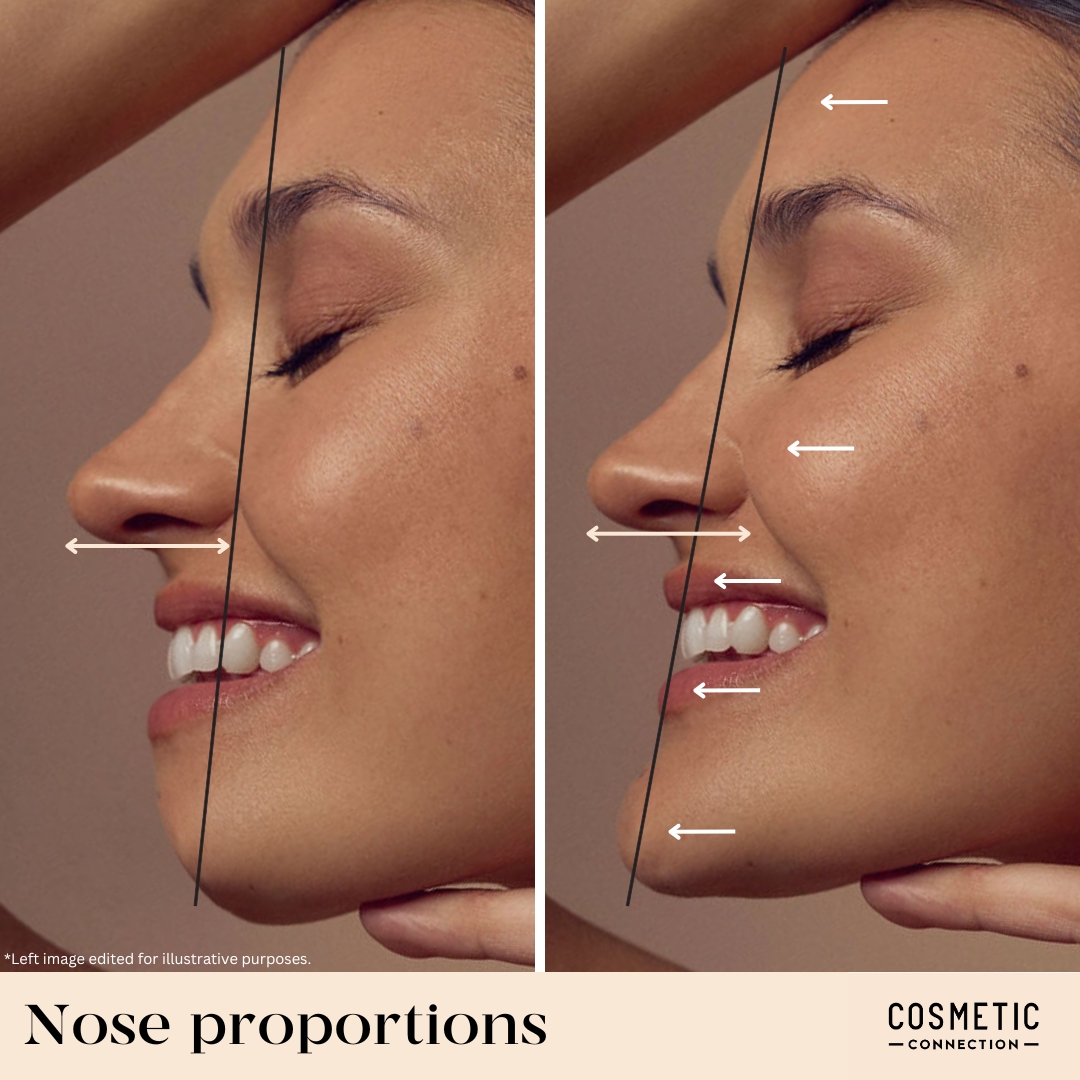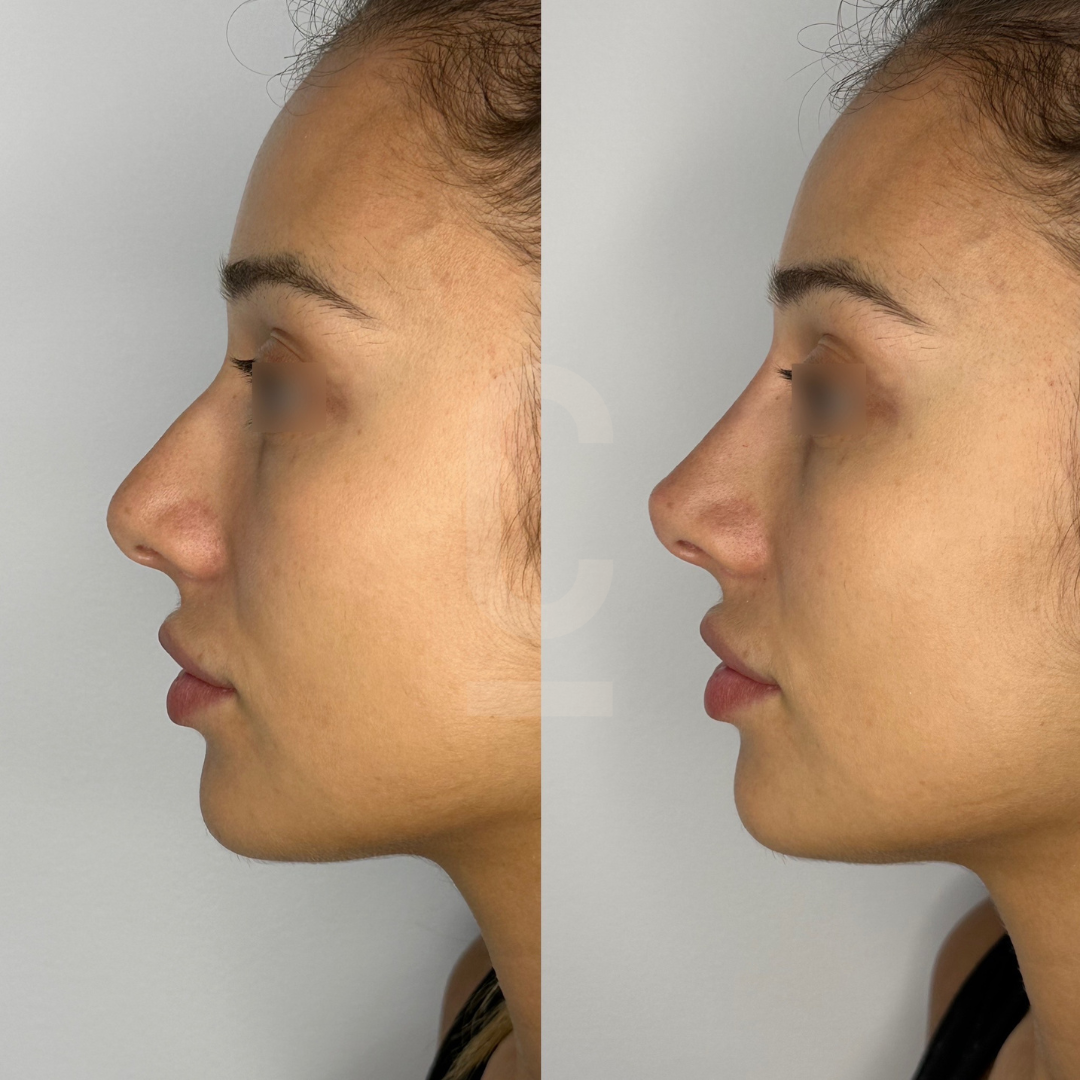Considering nose fillers but worried by what you read online? Reshaping the nose with dermal filler has exploded in popularity in recent years, and with it, myths and misinformation have become rife. At Cosmetic Connection, we value honesty and integrity. Here are the most common myths about nose filler treatment:
- Myth: Nose fillers are painful. Fact: Nose fillers can cause some discomfort, but the procedure is generally very well-tolerated. While there are a number of anaesthetic options available such as numbing cream, as the filler used to reshape the nose contains anaesthetic, almost universally, people are shocked at how little discomfort there is. We also use ultra-fine needles to reshape the nose, ensuring your procedure is as comfortable as possible.
- Myth: Nose fillers are permanent. Fact: Nose fillers are not permanent. They are made of a substance based on a naturally occurring molecule known as hyaluronic acid that helps to add volume and hydration to the skin. The effects of nose fillers typically require maintenance every 6-24 months. The filler is gradually broken down and absorbed by the body and can be maintained with repeat treatments as needed.
- Myth: Nose fillers cannot drastically change the shape of your nose Fact: While nose fillers are powerful ways to optimise fine details of your nose, when used correctly that they can also dramatically alter the shape of your nose for the better. Smoothing out a dorsal hump and adding projection to the nose tip are some of the most popular treatment goals of nose fillers.
- Myth: Anyone with basic training can perform a nose filler treatment. Fact: It is important to have nose fillers administered by a qualified medical professional with extensive experience in treating noses, such as a cosmetic doctor or plastic surgeon. These professionals have the training and expertise to safely and effectively perform the procedure.
- Myth: Nose fillers can cause serious side effects. Fact: Like any medical procedure, there are potential risks and side effects associated with nose fillers. However, serious side effects are rare when the procedure is performed by a qualified medical doctor. Common side effects may include redness, swelling, and bruising at the injection site, but these typically resolve within a few days.
- Myth: You can’t wear glasses after getting nose fillers. Fact: While you may experience some swelling or tenderness after getting nose fillers, you should be able to wear glasses a week after the procedure. If your glasses don’t sit across the area treated with fillers, then you can wear them immediately. Avoiding pressure to the area treated for 7 days if vital in ensuring the filler sets in the position it was injected.
- Myth: Nose fillers are only for women. Fact: Both men and women can benefit from nose fillers. In fact, the demand for non-surgical nose enhancement among men has been significantly increasing in recent years.
- Myth: Nose fillers can make you look fake or artificial. Fact: When performed by a qualified medical professional, nose fillers can help to enhance your natural appearance and give you a more balanced, proportionate look. It is important to have realistic expectations about what nose fillers can and cannot do, and to communicate your goals and concerns with your doctor. Natural yet noticeable results are the most common outcome of a well-performed treatment.
- Myth: Nose fillers are only for people with small noses. Fact: Nose fillers can be used to enhance the appearance of any size nose. They can be used to improve the shape and size of a small nose, or to correct imperfections in a larger nose.
- Myth: Nose fillers will widen the nose from the front. Fact: When performed incorrectly by under-qualified or inexperienced practitioners, nose filler will always widen the nose from the front. True masters of nose fillers are able to achieve significant improvements in the appearance of your nose, and can make your nose look slimmer from the front on view. People requiring large corrections (such as those with a large dorsal hump), or those with soft or loose skin are more prone to widening.
- Myth: Nose fillers have a high risk of making you go blind. Fact: A significant risk of dermal filler injections is blindness. This is not an exclusive risk to nose filler, in fact it is a risk of any dermal filler injection on the face. While it is true that the risk is higher for the nose, when performed by a highly qualified and highly experienced cosmetic doctor, the risk of blindness after nose fillers is very low. It is absolutely critical to chose not only someone with the appropriate qualifications, but someone with extensive experience in treating the nose. The most dangerous injectors are those that think they know how to safely treat a nose, but do not. Inexperienced and under-qualified practitioners have a much higher risk of causing blindness from nose filler. Always choose an experienced medical doctor with qualifications in cosmetic injectables (such as from the Australasian College of Cosmetic Surgery and Medicine), who can showcase a very large number of great nose filler results proving their level of experience.






